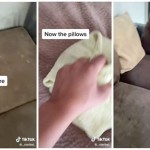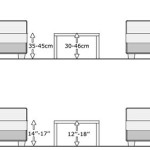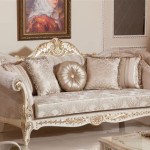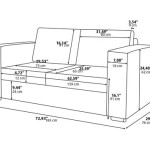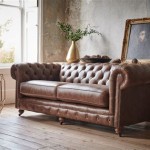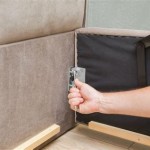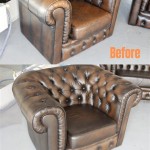Parts Of A Sofa Cushion: A Comprehensive Guide
Sofa cushions contribute significantly to both the comfort and aesthetic appeal of a sofa. While seeming like a simple component, a sofa cushion comprises several distinct parts, each playing a crucial role in its overall performance. Understanding these parts, their composition, and how they interact can be beneficial when considering sofa purchases, cushion maintenance, or even DIY cushion projects.
The Core Filling: The Foundation of Comfort
The core filling is arguably the most crucial part of a sofa cushion. It dictates the level of support, firmness, and longevity of the cushion. Various materials are used, each offering unique characteristics and impacting the overall feel and performance of the sofa.
Foam: Foam is a widely used filling material due to its affordability and versatility. Different types of foam exist, each with varying densities and properties. High-density foam provides firmer support and greater durability, making it suitable for cushions intended for heavier use. Low-density foam offers a softer, more yielding feel but may compress more quickly over time. Polyurethane foam is a common type, while memory foam responds to body heat and pressure, conforming to the user's shape. The choice of foam density affects not only the comfort level but also the lifespan of the cushion. Lower density foam is generally cheaper but needs replacement more often.
Feather and Down: Feather and down fillings provide a luxurious and plush feel. Down refers to the soft, fluffy layer beneath the feathers of ducks and geese, providing exceptional insulation and softness. Feather fillings, while still soft, offer more structure than pure down. These fillings are known for their ability to conform to the body and create a sinking-in sensation. However, feather and down cushions require regular fluffing to maintain their shape and prevent clumping. They may also require specialized cleaning due to the natural materials used. Feather and down blends offer a balance between the softness of down and the structure of feathers, often being more affordable than 100% down options.
Fiberfill: Fiberfill, typically made from polyester fibers, is a synthetic alternative to natural fillings. It is lightweight, hypoallergenic, and relatively inexpensive. Fiberfill cushions tend to be softer than foam cushions but may not offer the same level of support. They are also prone to flattening over time and may require more frequent replacement. Different types of fiberfill are available, with some offering more resilience and loft than others. Hollow-core fiberfill, for example, provides more springiness compared to solid-core options. Fiberfill is a popular choice for throw pillows and cushions where a softer, less structured feel is desired.
Innerspring: Some sofa cushions incorporate innerspring units, similar to those used in mattresses. These units consist of individual coils encased in fabric pockets, providing support and resilience. Innerspring cushions offer a more structured and firmer feel compared to foam or fiberfill options. They are often used in sofas designed for optimal back support and long-term durability. The gauge and configuration of the coils impact the firmness and responsiveness of the cushion. Higher gauge coils typically offer firmer support. Innerspring cushions are often combined with layers of foam or fiberfill for added comfort.
The selection of the core filling should align with intended use, desired level of comfort, budget constraints, and potential maintenance requirements. Considerations should include allergies, desired firmness, and expected lifespan of the sofa.
The Ticking: Encasing and Protecting the Filling
The ticking is the fabric encasement that surrounds the core filling of the cushion. Its primary purpose is to contain the filling, preventing it from shifting or migrating. The ticking also acts as a protective barrier, preventing wear and tear on the filling and providing a smooth surface for the outer cushion cover.
Material Composition: Ticking is typically made from durable, tightly woven fabrics such as cotton, linen, or a blend of synthetic fibers. The choice of material depends on the type of filling used. For feather and down fillings, a tightly woven cotton or down-proof fabric is essential to prevent feathers from escaping. For foam or fiberfill cushions, a less dense weave may be sufficient. The fabric should be breathable to allow air circulation and prevent moisture buildup. Quality ticking fabrics are often treated with stain and water-repellent finishes to enhance their durability and ease of cleaning.
Construction and Design: The ticking is typically sewn into a shaped bag that conforms to the desired shape and size of the cushion. The seams should be reinforced to prevent tearing or separation. Some ticking designs include internal baffles or channels to help distribute the filling evenly and prevent clumping. For cushions with innerspring units, the ticking may be quilted or stitched to secure the coils in place. The closure of the ticking can vary, with options including zippered closures or sewn-shut designs. Zippered closures allow for easier access to the filling for cleaning or replacement, while sewn-shut designs provide a more streamlined appearance.
Importance of Quality: The quality of the ticking significantly impacts the overall performance and lifespan of the cushion. A durable, well-constructed ticking will protect the filling from damage, prevent shifting, and ensure even distribution of support. A poorly made ticking may tear easily, allowing the filling to escape and compromising the cushion's comfort and appearance. When selecting a sofa, it's crucial to inspect the ticking for quality stitching, durable fabric, and proper fit.
While often unseen, the ticking is a critical component of the sofa cushion, providing essential protection and ensuring the longevity of the core filling. The choice of material, construction, and design of the ticking should be carefully considered to optimize the cushion's performance and durability.
The Outer Cover: Aesthetics and Durability
The outer cover is the visible layer of the sofa cushion, determining its aesthetic appeal and contributing to its durability and comfort. It serves as the primary defense against wear and tear, stains, and fading. The choice of fabric, design, and construction of the outer cover significantly impacts the overall look and feel of the sofa.
Fabric Selection: A wide variety of fabrics are used for sofa cushion covers, each offering different properties and aesthetics. Cotton is a popular choice due to its affordability, breathability, and versatility. Linen provides a natural, textured look and is known for its durability. Synthetic fabrics, such as polyester and microfiber, are resistant to stains, fading, and wear. Blends of natural and synthetic fibers offer a balance of benefits. Leather and faux leather options provide a sophisticated look and are durable, but may require specialized care. The choice of fabric should consider factors such as durability, stain resistance, comfort, and aesthetic preferences. Performance fabrics, designed for high-traffic areas, offer enhanced stain and water resistance. The weight and weave of the fabric also affect its durability and resistance to abrasion.
Design and Style: The design of the outer cover can greatly influence the overall style of the sofa. Solid colors offer a classic and versatile look, while patterns add visual interest and personality. Piping and welting along the edges of the cushion provide a tailored and refined appearance. Decorative stitching, tufting, and button detailing can enhance the cushion's aesthetic appeal. The shape and size of the cushion cover should complement the design of the sofa. Different styles of cushion covers include box cushions, knife-edge cushions, and T-cushions, each offering a unique aesthetic. The choice of design should align with the overall style of the room and the desired aesthetic.
Construction Techniques: The construction of the outer cover impacts its durability and fit. Reinforced seams prevent tearing and separation. Zippered closures allow for easy removal and cleaning of the cover. The zipper should be durable and concealed to prevent damage. The fit of the cover should be snug and smooth, without any looseness or wrinkles. Some covers are designed with elasticized edges or ties to ensure a secure fit. The lining of the cover provides added protection and prevents stretching or distortion of the fabric. Quality construction techniques ensure that the cover will withstand regular use and maintain its shape and appearance over time.
Maintenance and Care: Proper maintenance and care of the outer cover are essential for preserving its appearance and extending its lifespan. Regular vacuuming removes dust and debris. Spot cleaning addresses spills and stains promptly. Professional cleaning may be required for delicate fabrics or stubborn stains. Following the manufacturer's instructions for cleaning and care ensures that the cover is properly maintained. Some covers are machine washable, while others require dry cleaning. Rotating cushions regularly helps to distribute wear evenly and prevent fading. Protecting the cover from direct sunlight minimizes fading and discoloration.
The outer cover is more than just a decorative element; it is a functional component that protects the cushion filling, contributes to its comfort, and defines its aesthetic appeal. Careful consideration of fabric selection, design, construction, and maintenance is essential for ensuring the longevity and beauty of sofa cushions.

Image Result For Parts Of A Sofa Interior Design Instagram Images Furnishings

Info Diagram Upholstery Dining Chair Foam

Construction Diagram For A Sofa Stanton Sofas At Rife S Home Furniture Dining Chair Upholstery Frame

What Are The Parts Of A Leather Sofa Currier S Real Furniture

Padding The Sofa Genuine Leather Furniture Cushions On

Ilrated Diagrams Of The Parts A Couch 2024 Guide Drawing Furniture Sofa Living Room Design

Topchances 5 Pieces Loveseat Sofa Covers Velvet Stretch Couch Slipcovers For 2 Cushion Anti Slip Furniture Slipcover With Separate And Backrest Dark Grey Com

18 Types And Styles Of Sofas Couches Explained With Photos

Easy Inexpensive Saggy Couch Solutions Diy Makeover Love Of Family Home

Sofa Parts A Complete Guide How To Swyft

